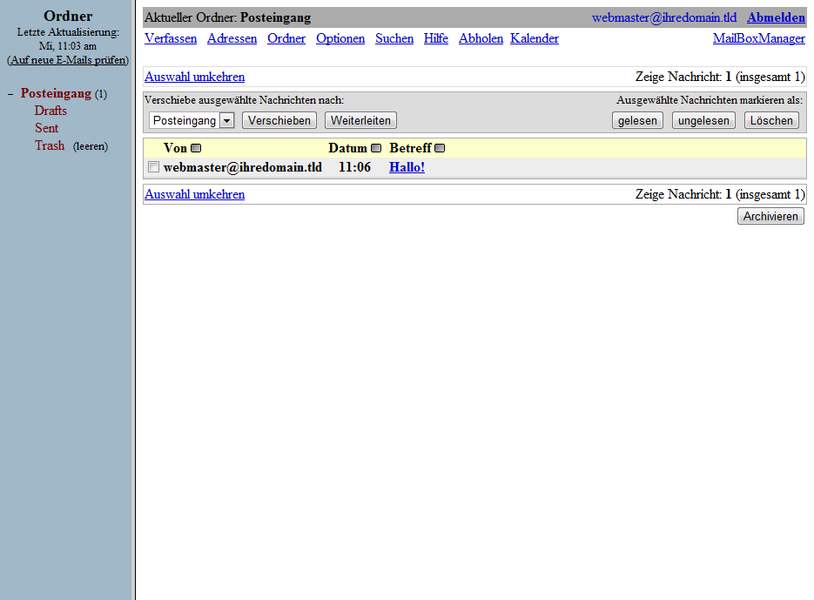
#Cise squirrelmail install#
If you decide not to install phpmyadmin, skip this step. Adding the EPEL repository is only needed if you are going to add phpmyadmin. 3Ĥ NOTE: I have been advised that the use of phpmyadmin can be a security risk. Now on to the installation of the packages we need, then the configuration of a few items.

If you needed updates, let that churn through the system and finish, might take a while depending on your connection to the internet and the speed of your computer.
#Cise squirrelmail update#
To test give the following a try: sudo yum update 2ģ And you should get something like the following: Type your user account password and it should either update or say that no updates were needed, mine needed a bunch of updates since it was a fresh install. Then quit (:q!) and you will return back to the terminal. Type: :w! to save the document and overwrite the read only file.

Press the escape key to get out of insert and back into command mode. Type: su followed by the root user's password that you created when you installed the OS Now type the following to edit the sudoers file: vi /etc/sudoers 1Ģ Should look like the following: Page down until you see the root account permissions, press i to get into insert mode, and add your user name in the same format as the root account above: username (tab) ALL=(ALL) (tab) ALL This gives you full control, there are many other levels that should work, but I was lazy and just gave myself full control. So lets start at the beginning, log in as your user account and open a terminal, we are going to set up the user account to be able to assume full control. You will need some sort of elevated privileges in order to make this install, ability to install packages, change permissions on files, etc. I used sudo for everything as opposed to logging in as the root account which is probably pretty common for most hosting companies. Most of it is command line and it pretty well picks up right after you make your first (forced) user account. This should also work for some of the minimum installs on the CentOS installer disk, but it has not been tried.

1 Installing Booked scheduler on CentOS 6.5 This guide will assume that you already have CentOS 6.x installed on your computer, I did a plain vanilla Desktop install into a Virtual Box VM for this test, should be the same for most real metal installations.


 0 kommentar(er)
0 kommentar(er)
